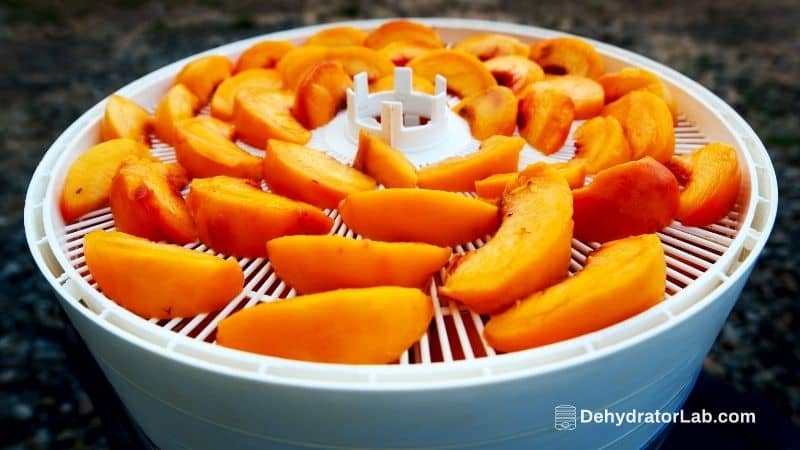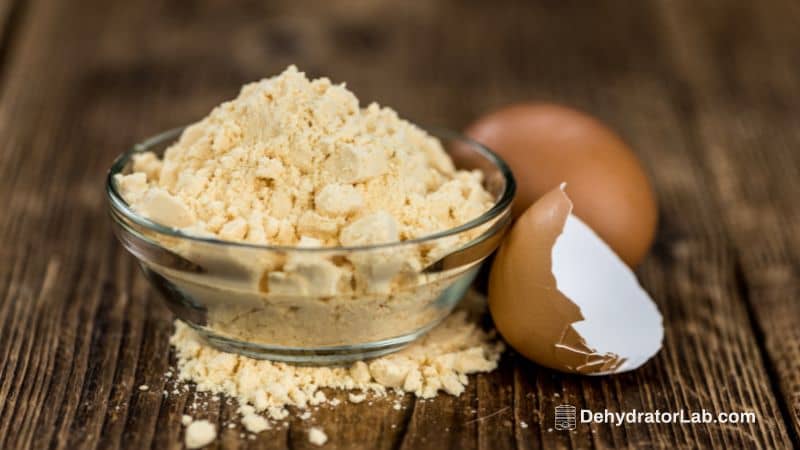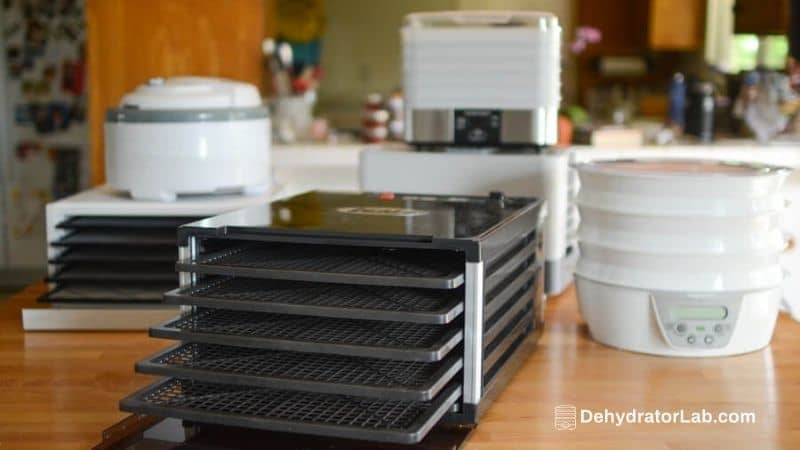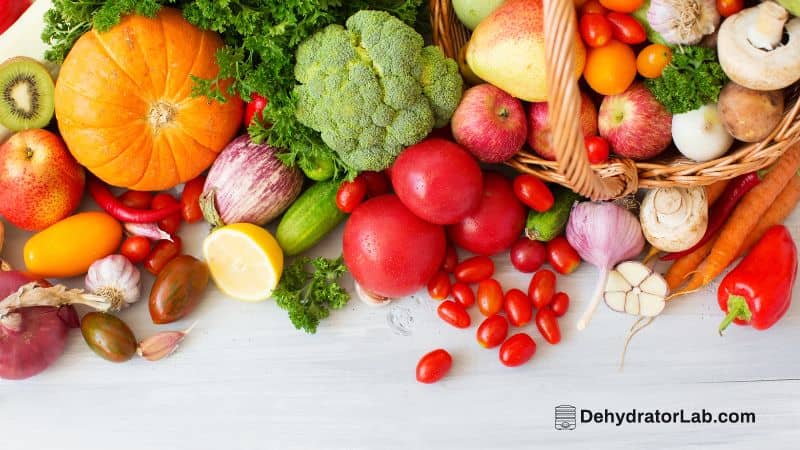A food dehydrator is your best friend when it comes to alternating kitchen roles. It lets you do fun cooking and dehydrating tasks you’ve never imagined doing.
Dehydrators, just like other kitchen devices, deliver peak performance if used as per the printed guidelines. Beginners and advanced users alike need to observe the best tricks and tips to get the most out of their dehydrator.

As an Amazon Associate, I earn from qualifying purchases. If you make a purchase after clicking on a link I may earn a small commission at no extra cost to you if items are purchased.
Listed here are the top 10 useful tips everyone should follow when using a food dehydrator.
In this article:
10 Easy Ways How To Use a Food Dehydrator
1. Set the Dehydrator to Dry Rather Than Cook Food
A dehydrator is a cool and versatile household device that can do lots of fun and exciting stuff when in the right hands. Despite being cool and versatile, a dehydrator can mess you big time if you set the temperatures too high when drying easy-to-cook foods. Instead of the foods being dried, they will come out cooked. I am sure you know what it means to cook a dozen of smokies or a tray of eggs at once!
Different foods, dry and cook at different temperatures. Understanding this basic reality before trying to put any foods into the dehydrator for preservation is critical. It lets you set the temperatures correctly, depending on what you’re preserving.
Experts recommend you keep the temperatures below 118 degrees Fahrenheit unless you want to dry the foods intensely. At 118 degrees Fahrenheit, the food nutrients and flavor are conserved, and the food quality maintained topnotch.
2. Use a Timer Appropriately
Food dehydrators differ based on manufactures. Some come with built-in timers, while others have to be connected to external timers (view on Amazon). Timing is very crucial when using a dehydrator since all foods don’t dry at the same time. A timer helps avoid issues with food over-drying or in worse cases cooking.
A timer works to shut off the dehydrator automatically once the drying limit of the food is achieved. It’s a key feature in dehydrators that lets you make the most out of your device. That’s true since you don’t have to be around to watch over the dehydrator as it performs its magic.
You can even leave the dehydrator on and drive miles away to attend important meetings without worrying about your food over-drying. Follow the food timing guidelines as provided by professional recipe preparers to ensure you get the best dehydrating results.
3. Prepare the Foods Properly
Preparation is a critical step in the food cooking process. Preparing the foods before dehydration guarantees better quality, taste, and appearance once the food has been cooked.
The best way to prepare foods for dehydration is by washing them before cutting, dicing, or shredding them uniformly. Experts recommend the slices to be of size 6 to 20 millimeters. Meats should be cut to slices lower than 5 millimeters, though.
It’s strongly recommended you soak the foods in pineapple (you might want to try dried pineapple) or lemon juice after cutting for around 3 minutes before dehydrating. You may as well choose to soak it in an ascorbic acid solution.
Fruits with waxing qualities such as blueberries, peaches, and grapes should be dipped in boiling water to help get rid of the wax to make dehydration easier. Vegetables such as broccoli, beans, peas, and corn should be steam blanched before drying for about 90 seconds.
Always ensure the food cuts are as even as possible. Dehydrating foods with different thicknesses risks you getting mushy and extremely dehydrated slices.
4. Fill the Foods in the Tray Appropriately
Dehydrating sliced foods can make them shrink in size. Drying trays are designed to hold specific sizes of sliced food, so if the foods become too small to be held by the trays, they will fall through the holes. The easiest way to prevent foods from falling through the drying tray holes is to line the trays with mesh inserts (see prices on Amazon).
Get your shredded or chopped foods spread over the mesh inserts. Make sure the spreads aren’t thicker than 3/8 inches. By use of pork, try to expose the mesh inserts in different places to ensure air circulates properly.
Foods like sugared fruits, ripe tomatoes, and citrus will likely drip, so it’s advised you tap your tray firmly using a towel to extract the extra moisture. You can do so by placing a fruit leather sheet on the bottom of the trays to catch the remaining overflow.
After the food has totally dripped, take out the fruit leather sheets from the bottom of your trays. Ensure you don’t cover the center hole in the trays or lid while dehydrating.
5. Dehydrate Foods to 95%
Drying food items to 100% make them extremely hard to cook. As well, drying items to 90% or below risks them getting spoiled quickly when stored. Experts recommend drying all food items to at least 95% as it minimizes chances of living organisms attaching themselves to the food to speed rotting.
For the best results, ensure you dehydrate breakable, crunchy, and hard foods as they take less time to dry. Drying soft, spongy, and sticky foods will eat up lots of your time, and may not dry properly.
You’ll achieve the best results if the room in which you’re dehydrating the food items is hot and dry. Rooms without quality air circulation delay, especially the ones experiencing indoor humidity and breeze affect the drying times. Consider drying in a warm and dry place, which doesn’t have many windows and air vents for the foods to dry properly and in a short time.
6. Don’t Try Rushing the Drying Process
When it comes to drying foods, some people think setting the dehydrator temperature too high can speed up the process, which is not actually the case. As matter-of-factly, setting the temperature too high only risks your food spoiling super-fast once stored. Drying foods at high temperatures only seals the exterior and leaves the moisture condensed inside.
The temperature and time guidelines printed on different food manuals should be followed rigorously. Proper adherence to the provided food drying guidelines will result in wholly dried food that will last long. If possible, consider setting the temperature a bit lower and dry for more time.
That way, every part of the food being dried will be touched, ensuring no moisture content left to make the food to spoil quicker than expected. Also, take time to wash your fruits and vegetables and soak them in ascorbic acid solution before dehydrating to preserve their color, flavor, and nutrients.
When possible, keep your meat in a freezer for some time before you hydrate it, so you will have an easier time slicing it into the desired sizes.
7. Be More Innovative
Just because there’re user guidelines and manuals to be followed doesn’t mean you limit yourself. You can be as flexible as you wish and do lots of exciting things with your dehydrator. If you didn’t know, the dehydrator is one of the most versatile machines you can ever have in your kitchen. There are a hundred-plus one things you can do with your dehydrator. Learn here all the uses for a food dehydrator. All you need is to be innovative and smart.
You can use it to make fire starters, create meat jerky, dry vegetables, make crispy banana chips and do lots of other fun things. In other words, your dehydrator can do virtually everything you can ever imagine of using it to do.
Search the internet to know the best way to use your dehydrator to maximize its usefulness in your house. It will surprise you to realize that you can even use this cool machine to dry your soggy winter gloves and caps.
8. Use It More Efficiently
If under the right hands, a dehydrator can turn out to be a cost-effective way to dry stuff around the house and increase the shelf life of different foods. You can’t do so by reducing the dehydration time or setting the temperatures too high. The smartest way to ensure your dehydrator does a clean job without raising your energy bills too high is to let the machine warm up to the desired temperature setting before you add the food items you want to be dried.
Drying items that require the same time and temperature can also do the magic. By drying the items together, you will save not only time but also reduce the energy bills. Food items small and thick enough to pass through the dehydrator tray once dried take less time to dry. They as well require less space, meaning by slicing your foods to small sizes, it will be possible to dehydrate more items and save on electricity and time as well.
9. Dehydrate Similar Foods
Even when in a hurry, never dehydrate foods that aren’t in the same family. For instance, never try drying spicy items like pepper together with fruits like bananas. Your bananas will come out spiced and not eatable. It will be better if you dehydrate fruits like apples together instead.
Experts strongly advise against drying foods in the brassica family together. They usually emit sulfur taste that may soak into the foods you are dehydrating together, creating a nasty flavor. These include rutabaga, broccoli, sprouts, cauliflower, Brussels, turnips, and kohlrabi.
Food items like onions and pepper emit oils that quite irritating when they come into contact with the eyes. So, if you’re to dehydrate them together, you must ensure your dehydrator is placed in a ventilated spacing or rather in an open area.
10. Store Your Dried Foods Properly
Before storage, let your dried food cool down properly. It’s not advisable to store the food before it has cooled down thoroughly. Experts recommend you store the dried food in a cool, dry, and dark place. Use air-tight, moisture-proof, and clean containers to ensure your foodstuffs last longer.
Avoid lightweight plastic bags, bread wrappers, cloth bags, and any other container that doesn’t include an air-tight super fitting lid. Instead, you can use heat-sealed or heavy zippered plastic bags.
Don’t over store the dried foodstuffs. Vegetables and fruits cannot go past 12 months of storage without spoiling, so use them the soonest you can. As for jerky, poultry, fish, and other meats, they won’t last past 60 days. See how long dehydrated food and meat can last in another article on our website.
Conclusion
Your dehydrator is super versatile and practical. It can dry lots of different foodstuffs to extend their shelf life. There are expert tips to help you use your dehydrator efficiently and adequately, so it gives the best value for money. We have just listed a few such tips. Here is one more: how to dehydrate food at home without a dehydrator
Check them out and make sure to keenly follow them if you want your experience to be excellent. You can find more tips online, so don’t limit yourself to what we have offered above.



